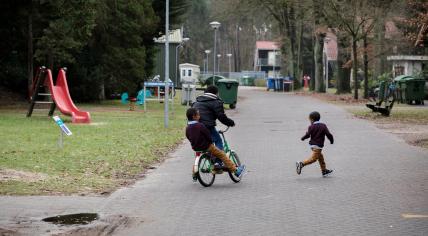
Sharp increase in asylum seekers finding work; Teens causing problems in shelters
The number of asylum seekers entering the labor market increased rapidly after the Council of State scrapped the rule limiting them to working no more than 24 weeks per year. In the whole of 2023, 2,016 asylum seekers received a work permit. In January and February this year, that counter already stood at 1,159, BNR reports based on figures from the benefits agency UWV. De Telegraaf reported that the Central Agency for the Reception of Asylum Seekers (COA) is struggling with children and teenagers causing problems in the asylum shelters.
The Council of State scrapped the 24-week requirement on November 29 last year, ruling it contrary to European rules. Since then, employer organizations VNO-NCW and MKB-Nederland have seen a growing interest in employing asylum seekers, they told BNR. “We see the necessary successful initiatives emerging at a regional level. A historically tight labor market also helps with this,” said Antonie Reijnders, the labor market secretary at the organizations.
Temporary employment agency Randstad has several pilot projects running in which asylum seekers and refugees can work for NS, KLM, and KPN. General manager Werner Klaassen described the participants as a very motivated group. “I see what it does to people’s self-esteem and to the labor market,” he told the broadcaster. “There is a lot behind it, the whole social thing of having colleagues.”
Klaassen added that asylum seekers still have to overcome a mountain of bureaucracy before they can start working. He called the granting of the mandatory work permits “excruciatingly slow.” Figures from the Ministry of Justice and Security also showed that nearly 12,000 asylum seekers are not yet registered in the Personal Records Database and are therefore not allowed to work, BNR reported.
D66 parliamentarian Anne-Marijke Podt wants the government to abolish the currently mandatory work permit. She also wants to give asylum seekers immediate access to the labor market instead of having to wait six months in the asylum process before they can start working. A recent study by SEO Amsterdam Economics showed that giving asylum seekers the same unrestricted access to the labor market that Ukrainian refugees have would generate almost 2 billion euros in additional prosperity for the Dutch economy in ten years.
Young people causing problems at asylum shelters
Minor asylum seekers are causing problems in asylum shelters, De Telegraaf reports based on documents received from the Ministry of Justice and Security through the Open Government Act. COA employees report more incidents of aggression, threats, verbal and physical violence, and other misconduct from unaccompanied children.
The reception locations for unaccompanied children in the asylum procedure are currently overcrowded, and that is showing in the rise in incidents. Last year, there were 1,738 cases of aggression and violence, compared to 1,250 in 2022.
“The problem manifests itself in many incidents (which appear to be increasing in frequency and intensity in recent years), a lot of substance use, physical and verbal aggression, police contacts, and interventions,” the newspaper quoted from a COA report. “The consequences are an unsafe situation in the shelter, both for employees and young people, nuisance in the environment/society, decreasing support for asylum reception, and high pressure for control.”
There have been concerns about the situation children face in Dutch asylum centers for some time. Last year, the Netherlands dropped 16 spots on the Kids Rights ranking partly due to this.
In 2022, a Dutch court ordered the government to get children out of emergency shelters as quickly as possible due to concerns for their development, health, and safety. The Dutch Ombudsmen called the shelters degrading. Almost a year after that ruling, UNICEF reported that there were still more children staying in the emergency shelters.
